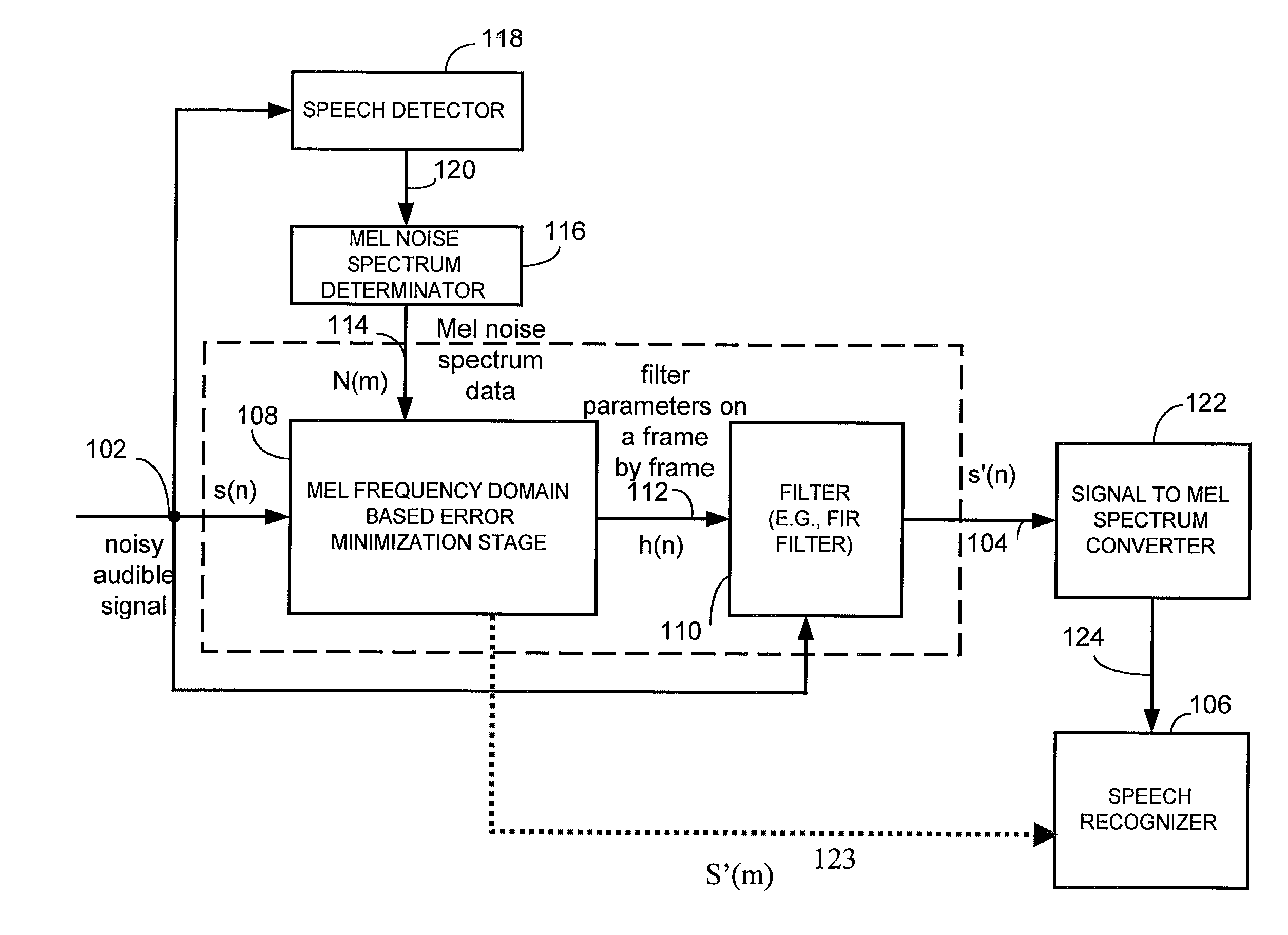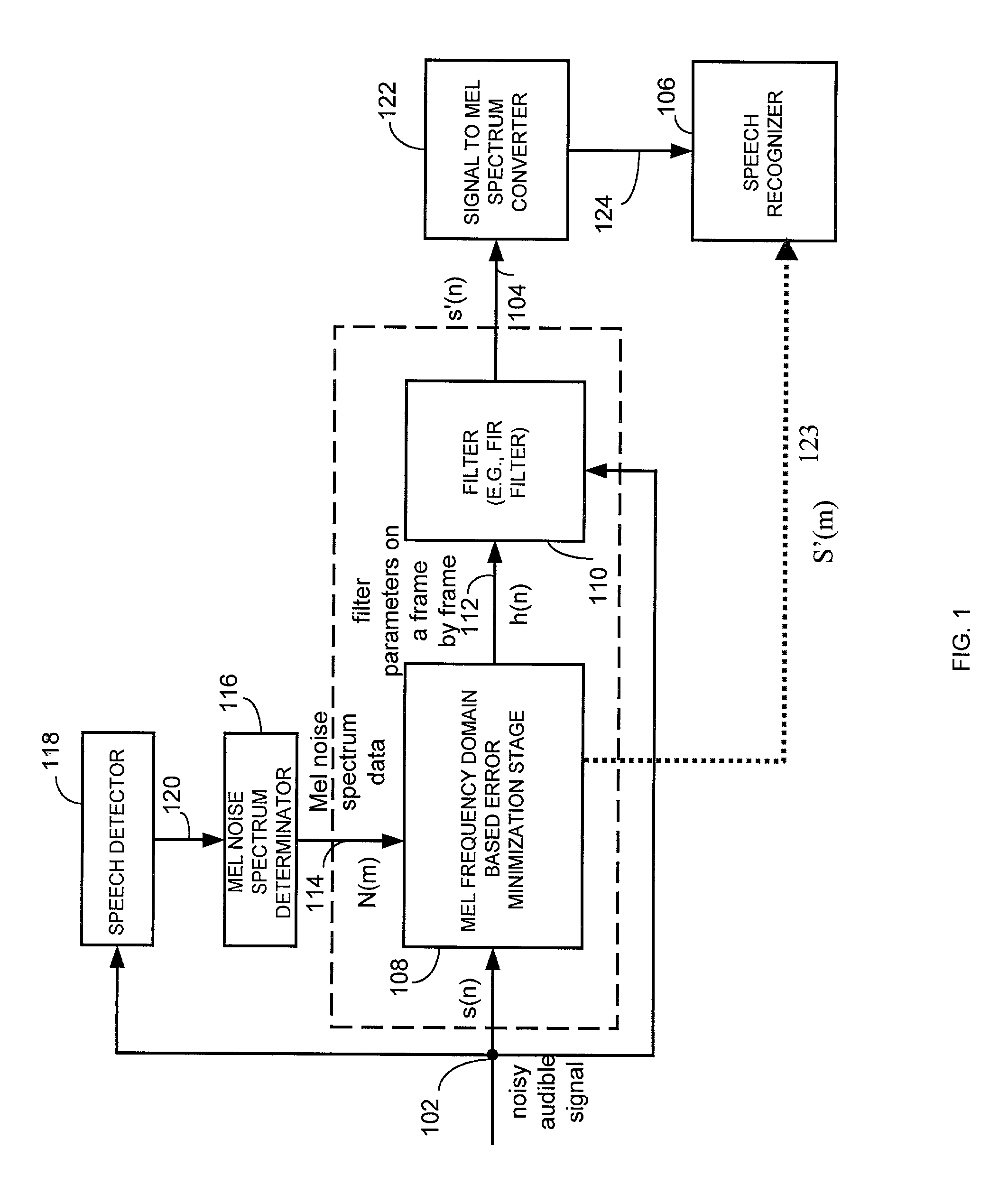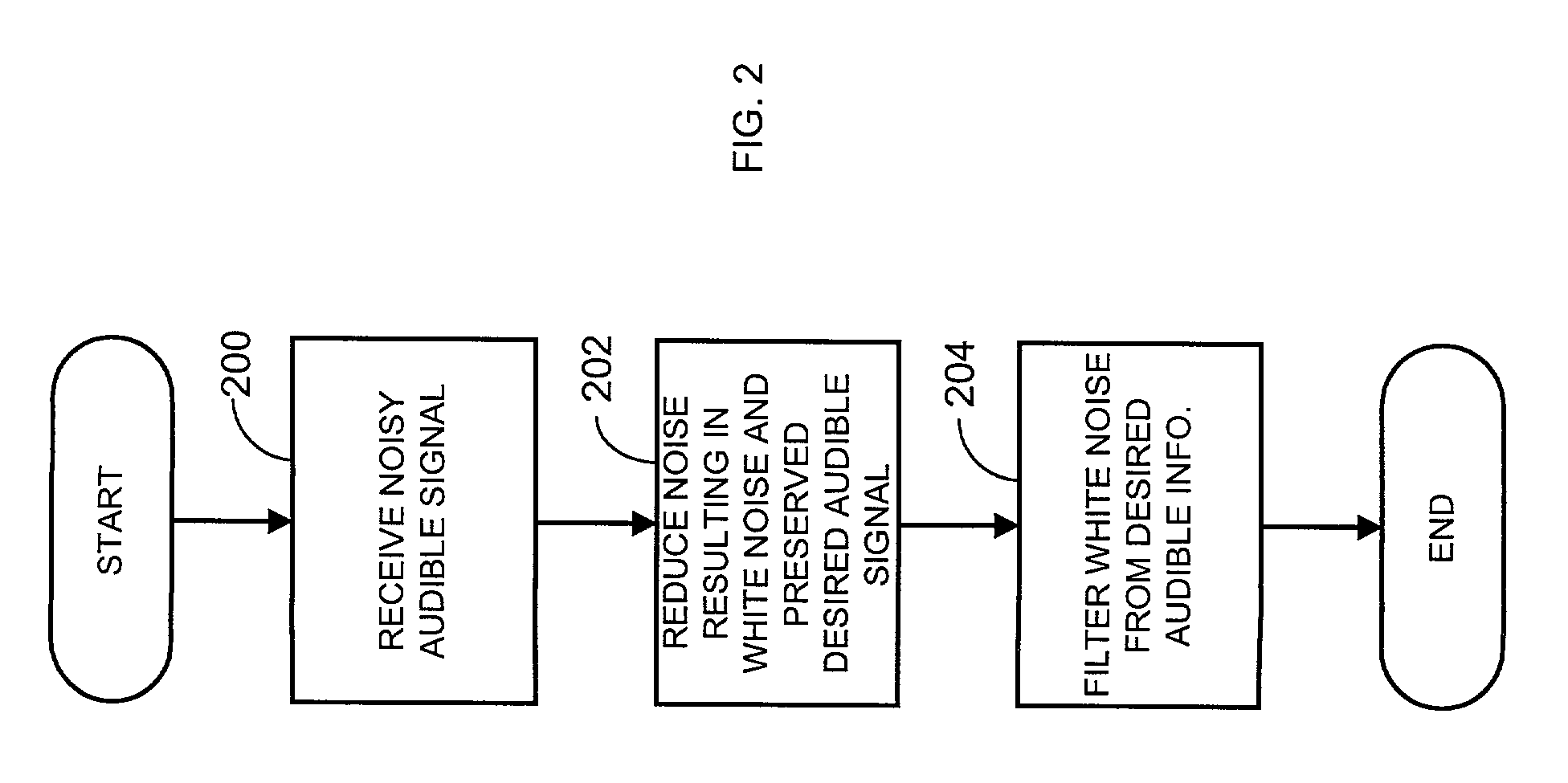Mel-frequency domain based audible noise filter and method
a filter and audible signal technology, applied in the field of filters, can solve the problems of difficult to produce all noise in all frequencies, speech recognizers used in wireless environments, such as in automobiles, may encounter extremely noisy interference problems, and may degrade dramatically the performance of speech recognizers
- Summary
- Abstract
- Description
- Claims
- Application Information
AI Technical Summary
Problems solved by technology
Method used
Image
Examples
Embodiment Construction
[0011] Generally, an audio filter and method performs noise suppression in a perceptually relevant Mel-frequency domain and removes complex noise interference using one or two stages. A first stage whitens detected noise while preserving speech. A second stage, if used, removes the whitened noise. Accordingly, the audio filter and method reduces a noisy portion of a noisy audible signal resulting in residual noise and converts the residual noise to a white noise signal while preserving desired audible information. The white noise signal is subsequently filtered from the desired audible information.
[0012] In one embodiment, the audio filter consists of two substantially identical stages with different purposes. The first stage whitens detected noise, while preserving speech or other audible information in an undistorted manner. The second stage effectively eliminates the residual white noise. Each audio noise filter stage, in one embodiment, includes a Mel domain based error minimiza...
PUM
 Login to View More
Login to View More Abstract
Description
Claims
Application Information
 Login to View More
Login to View More - R&D
- Intellectual Property
- Life Sciences
- Materials
- Tech Scout
- Unparalleled Data Quality
- Higher Quality Content
- 60% Fewer Hallucinations
Browse by: Latest US Patents, China's latest patents, Technical Efficacy Thesaurus, Application Domain, Technology Topic, Popular Technical Reports.
© 2025 PatSnap. All rights reserved.Legal|Privacy policy|Modern Slavery Act Transparency Statement|Sitemap|About US| Contact US: help@patsnap.com



